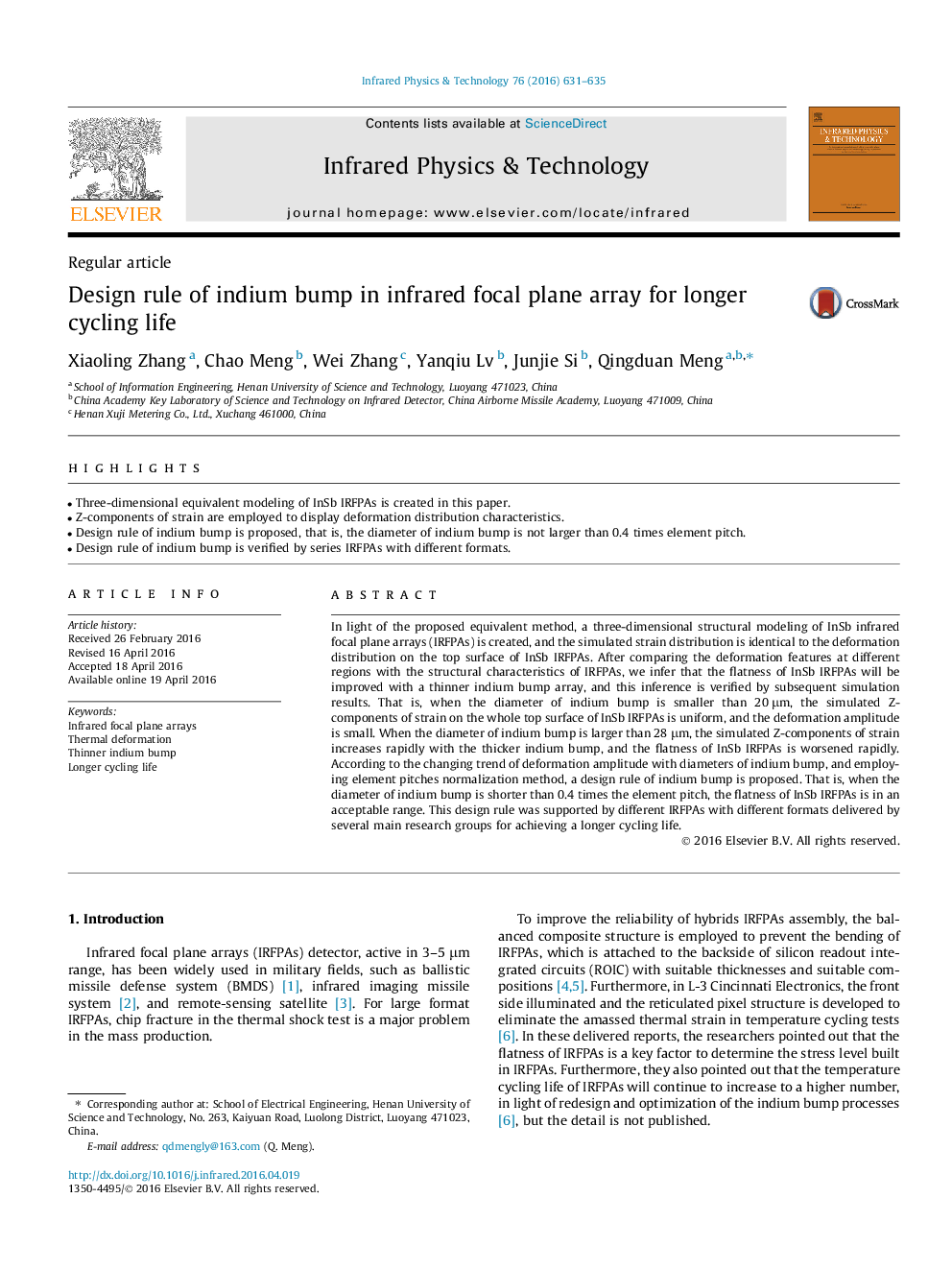| Article ID | Journal | Published Year | Pages | File Type |
|---|---|---|---|---|
| 8146568 | Infrared Physics & Technology | 2016 | 5 Pages |
Abstract
In light of the proposed equivalent method, a three-dimensional structural modeling of InSb infrared focal plane arrays (IRFPAs) is created, and the simulated strain distribution is identical to the deformation distribution on the top surface of InSb IRFPAs. After comparing the deformation features at different regions with the structural characteristics of IRFPAs, we infer that the flatness of InSb IRFPAs will be improved with a thinner indium bump array, and this inference is verified by subsequent simulation results. That is, when the diameter of indium bump is smaller than 20 μm, the simulated Z-components of strain on the whole top surface of InSb IRFPAs is uniform, and the deformation amplitude is small. When the diameter of indium bump is larger than 28 μm, the simulated Z-components of strain increases rapidly with the thicker indium bump, and the flatness of InSb IRFPAs is worsened rapidly. According to the changing trend of deformation amplitude with diameters of indium bump, and employing element pitches normalization method, a design rule of indium bump is proposed. That is, when the diameter of indium bump is shorter than 0.4 times the element pitch, the flatness of InSb IRFPAs is in an acceptable range. This design rule was supported by different IRFPAs with different formats delivered by several main research groups for achieving a longer cycling life.
Related Topics
Physical Sciences and Engineering
Physics and Astronomy
Atomic and Molecular Physics, and Optics
Authors
Xiaoling Zhang, Chao Meng, Wei Zhang, Yanqiu Lv, Junjie Si, Qingduan Meng,
